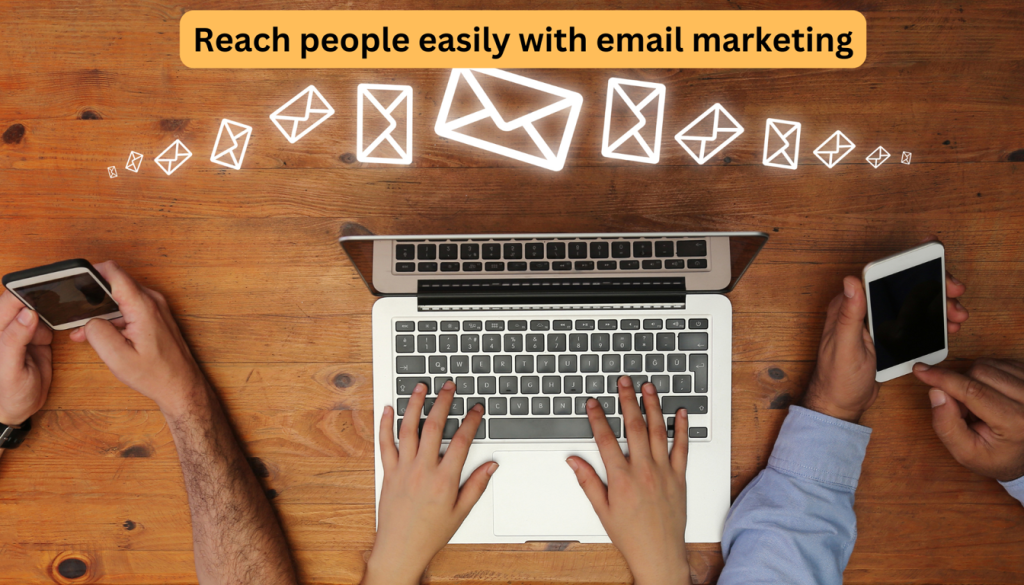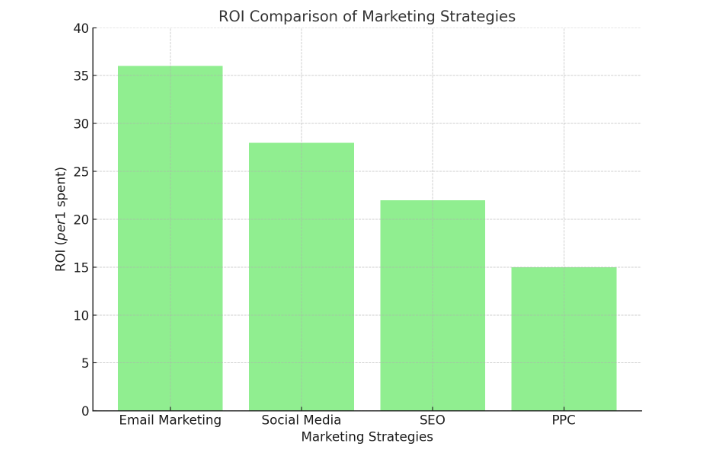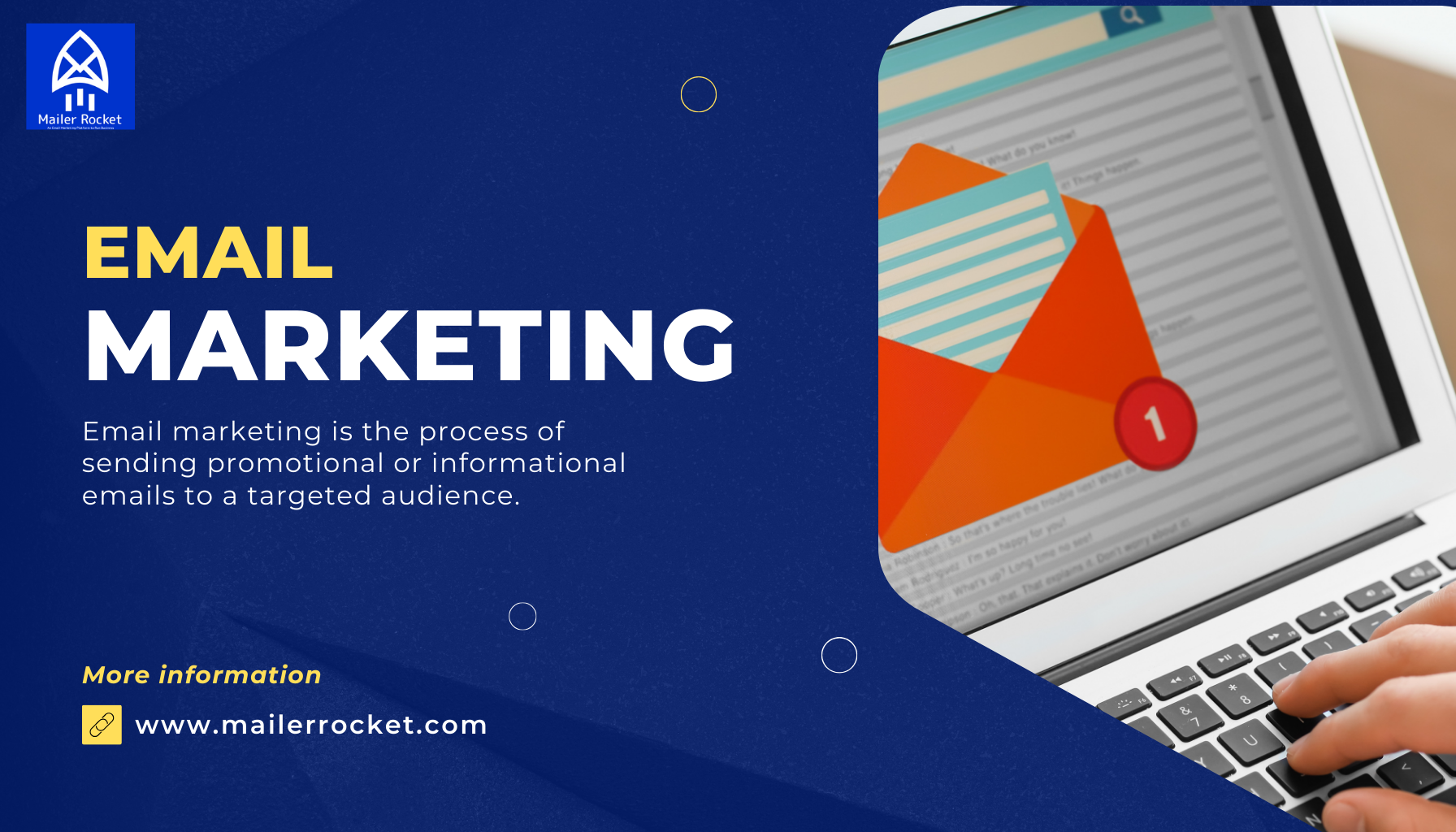Imagine opening your inbox and finding a message that feels like it was written just for you. That’s the magic of email marketing. It’s a tool that connects businesses to people for over 50 years. This guide will explain email marketing explained in easy terms. It shows why email marketing is still a powerful tool in 2025, even for beginners.
Key Takeaways
- Email marketing’s ROI hits $36 for every $1 spent, outperforming social media 55 times over.
- Over 4.5 billion people use email daily, making it the most reliable channel for reaching customers.
- Abandoned cart emails recover 20% of lost sales, turning missed opportunities into wins.
- Since 1978, email marketing has driven results—from the first $13 million campaign to today’s $17.9 billion industry.
- Personalized emails boost open rates by 30%, proving relevance drives results.
Start Your Email Marketing Journey with MailerRocket
Launch beautiful, high-converting email campaigns in minutes with easy tools for automation, segmentation, and real-time analytics — perfect for beginners and pros alike.
Email marketing started in 1978 and is now a $15.8 billion industry by 2026. It’s about sending direct, targeted messages that stand out in the digital world. Despite 4.5 billion users, many still wonder, “how email marketing works?” Let’s explore why it remains a key part of smart marketing.
Are you ready to learn why 95% of professionals rely on it? Let’s dive into the basics and see why this 54-year-old channel still beats newer ones.
Understanding Email Marketing Fundamentals
Email marketing basics are key to reaching people well. The importance of email marketing is huge, with $42 in returns for every dollar spent. For newbies, learning these basics is crucial to make campaigns work.
“Email marketing’s ROI outperforms most digital channels, proving its staying power in the digital age.”

Definition and Core Concepts
Email marketing sends valuable content to people who signed up for it. A beginner’s guide to email marketing should talk about building lists, segmenting, and sending personalized messages. Tools like MailerRocket make it easier to manage campaigns, with features for analytics and automation.
Being consistent and relevant is vital. It builds trust and gets people to take action.
How Email Marketing Has Evolved
Email has changed a lot since the first one in 1971. Early emails, like the 1978 one that made $13 million, seem simple compared to today. Now, we have tools for real-time data, interactive content, and personalized suggestions.
This makes email marketing essential for businesses today.
Explore MailerRocket Plans & Grow Your Business
Whether you’re just starting out or scaling fast, find the perfect pricing plan that gives you all the tools you need to turn emails into consistent revenue.
Key Components of Successful Email Campaigns
- List quality: Good, active lists help keep people interested and reduce unsubscribes.
- Segmentation: Customizing content for different groups can increase sales by 760%.
- Timing: Sending emails when people are most likely to read them can boost open rates by 20%.
Email Marketing vs. Other Digital Marketing Channels
Email marketing stands out because you own the audience. Unlike social media or paid ads, it offers a personal touch. This is why 59% of marketers say email gives them the best return.
Social media might get you noticed, but email builds lasting relationships with customers.

The Powerful Benefits of Email Marketing for Your Business
Let’s explore the benefits of email marketing that make it key for today’s businesses. It offers an average ROI of $42 for every $1 spent, beating many digital methods. Here’s why it’s worth your time:
- Cost-Effective Growth: Email marketing is cheap and can grow a lot. A single campaign can reach thousands for just a few cents. It’s perfect for both small startups and big companies.
- Direct Connections: Your email list is yours to care for. Unlike social media, it lets you talk directly to your audience without interruptions.
- Measurable Results: You can track email conversion rates, email open rates, and clicks. Personalized emails can increase conversions by 10%, showing how important it is to be relevant.
| Statistic | Value |
|---|---|
| ROI per $1 spent | $42 |
| Top open rate range | 20-30% |
| Revenue increase with segmentation | 760% |
| Preferred channel for customer acquisition | 79% of marketers |
Want to how to start email marketing? Start by making a targeted list. Use A/B testing to improve your subject lines. Personal touches like names can increase open rates by 26%. Even a 2% click-through rate can lead to sales with the right offers. And, 99% of people check their email every day, making it a direct way to reach your audience.
“Email’s ROI remains unmatched, delivering $42 for every dollar invested.”
Whether you’re small or growing, email marketing fits your needs. Start small, track your progress, and watch your engagement grow. Your audience is waiting in their inboxes.
How to Build and Execute Your First Email Marketing Strategy
Starting your first email campaign? Let’s break it down step by step. First, build your list ethically. Use signup forms, lead magnets like free guides, or webinars. Avoid buying lists—organic growth ensures engaged subscribers. Clean lists improve email deliverability by removing inactive contacts.
Next, segment your audience. Divide them by behavior, preferences, or demographics. Research shows email segmentation boosts revenue by 760%. Use tools like Mailchimp to track performance against industry benchmarks.
Now, craft content that converts. Write catchy subject lines—47% of opens happen between 4 a.m. and 8 a.m. Use A/B testing for subject lines, CTAs, and layouts. Test one variable at a time.
For example, personalized subject lines increase opens by 26%. Finally, automate workflows. Set up welcome emails (50% open rates) or abandoned cart reminders (2.68% conversion rates). Tools like Klaviyo make email automation simple. Track email analytics like open rates and revenue per recipient (RPR). Top campaigns hit $3.07 RPR via automation.
- Segment audiences for relevance
- Test subject lines and CTAs
- Automate welcome and abandoned cart flows
Focus on email personalization in content. Use subscriber names and tailored offers. Clean lists and clean code improve deliverability. With these steps, even small brands can see results.
Start small, track metrics, and scale what works. Your first email campaign is just the beginning of a growth loop that compounds over time.
Discover Smarter Email Automation with MailerRocket
Save hours every week by automating welcome emails, cart reminders, and follow-ups — all while keeping your audience engaged and coming back for more.
Conclusion: Taking Your First Steps in Email Marketing
Starting with email marketing is easier than you think. First, pick an email service that matches your budget and goals. Mailer Rocket are great for beginners.
Put a sign-up form on your website or social media. Offer free guides or discounts to get more people to sign up. This can increase sign-ups by up to 30%.
Even small steps are important. Send a welcome email to new subscribers. Start testing personalized content. Use A/B testing for subject lines and layouts to see what works best.
Email marketing can bring big returns. On average, you get $42 for every $1 spent.
Segment your list to send targeted messages. For example, emails about abandoned carts can convert at 18.64%. Make sure emails look good on mobile phones—70% of users delete unoptimized messages.
Focus on sharing value. Send tips, updates, or exclusive offers.
Consistency is crucial. Track how well your emails do. Even simple campaigns can get better over time. Over 78% of marketers see their engagement go up.
Start with something simple, like a monthly newsletter. Then, grow as you learn.
Don’t wait—the average person checks email 15-20 times a day. With 90% of adults using email, it’s a powerful way to connect. Take your first step today. Your audience is waiting to hear from you. Email marketing can help you build strong customer relationships and grow your business.


